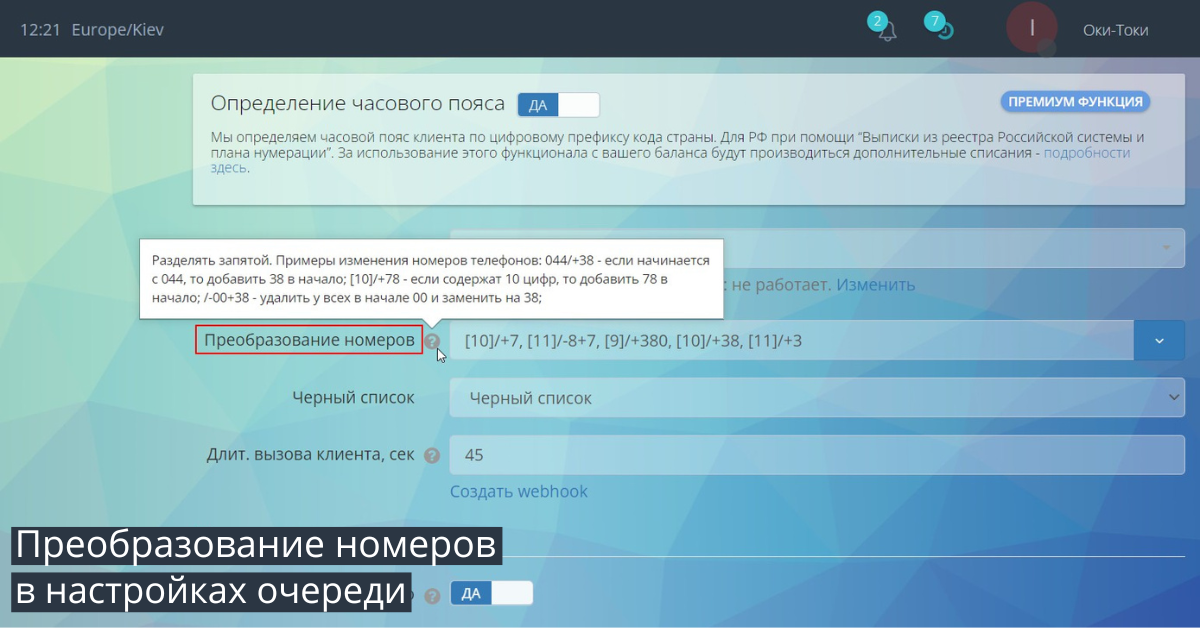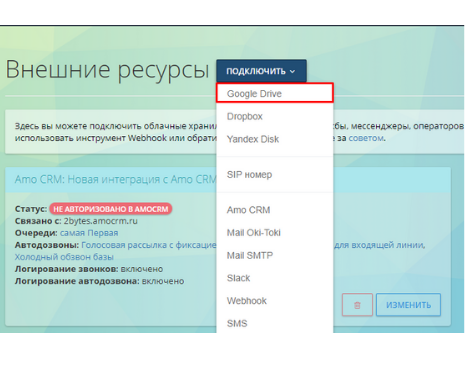We are accustomed to dialing phone numbers in various ways – some dial all numbers, even landlines with the city code, as on mobile (044 4968432), while others are used to dialing “38” before the city code – 38044 4968432. Incoming calls have their complexities too – city calls come in without the area code (4968432), whereas mobile numbers come in with the carrier’s prefix. Contact centers need number conversion for standardizing the storage and search of phone numbers.
Outgoing calls are accepted by telecom operators from Oki-Toki in their format and almost never in international.
For example, if your business will grow, and you open a branch in Germany or elsewhere – a client’s number without a country code will create confusion and, strictly speaking, will be meaningless.
Therefore, in CRM and ACD, all numbers should be standardized, otherwise duplicate numbers are inevitable. Therefore, we recommend storing all numbers in the format Country code, city code, subscriber number, for example: +380444968432.
According to this introduction, there are at least four places where number conversion is necessary.
Conversion of the number dialed by the agent
In the “Queues and Calls” menu, we select the required QueueSection “Agent’s Workplace”, field “Number Transformation”.

Number transformation rules are listed in one line separated by commas. We can choose from the provided list or enter manually.
My transformation rules are these: [10]/+7, [11]/-8+7, [9]/+380, [10]/+38, [11]/+3. What do they mean?
- [10]/+7 – if you dial 10 digits, for example 9534700009 – the system will insert 7 in front of the number and the call will go to the Tele2 customer’s mobile number.
- [11]/-8+7 – 11 digits, the prefix 8 will be replaced by 7
- [9]/+380 – 9 digits – the system will insert 380 in front of the number and the call will go to a customer’s mobile number in Ukraine
- [10]/+38 10 digits 0501234567, puts 38 in front of the number and the call goes to mobile Vodafone
- [11]/+3. 11 digits, 80671234567 – the system will put 3 in front of the number and the call goes to mobile Kyivstar.
Be careful and don’t allow for ambiguities like 38067[7], 38050[7]. Such an entry implies adding 38067 and 38050 at the same time to any seven digits dialed and this is impossible.
Transforming Numbers in Incoming Calls
In the “Queues and calls” menu – select the necessary Queue, the “Phone numbers” section, the “Incoming calls” area. The “Advanced” tab will open the “Number transformation” field.

Transformation During Contact Import
There is a separate article about setting up the Automatic number transformation during import. It describes the main rules and validation of numbers during manual import and via API.
The rules used are similar to the transformation settings in the queue. You can specify several separated by commas.
Important! If any of the phones does not fit any rule – no number will be added. And if all contact phones do not fit the rules – the contact will not be added. You will see a message about this in the import window.
Transforming Outgoing Numbers to the Format of the Telecommunications Operator (for Advanced Users)
SIP service providers use various number formats. Some, like us, require a 12-digit international format, while others use a 10-digit format. In order for SIP service providers to accept the outgoing authorization number in the required format, it is necessary to configure the number transformation in the gateway. Navigate to the SIP telephony tab SIP Providers, select the appropriate gateway – edit – advanced settings – Prefix and enter the rule. For example, “+3” implies that the number 3 will be added before the number. And “-38” suggests that the number 380444968432 will be stripped of 38 before the call to the agent is issued. For special cases, transformation chains are necessary to use; for instance /-38+545456.

Additionally
- There are unique types of numbers that cannot be converted. They need to be added as separate directions in telephony settings. For example, a number that starts with “0800”.
- If the format of the dialed number is not supported by the SIP provider, it ends the call with SIP 403, SIP 404 responses. About SIP responses from the SIP Provider there is separate material in two parts.



